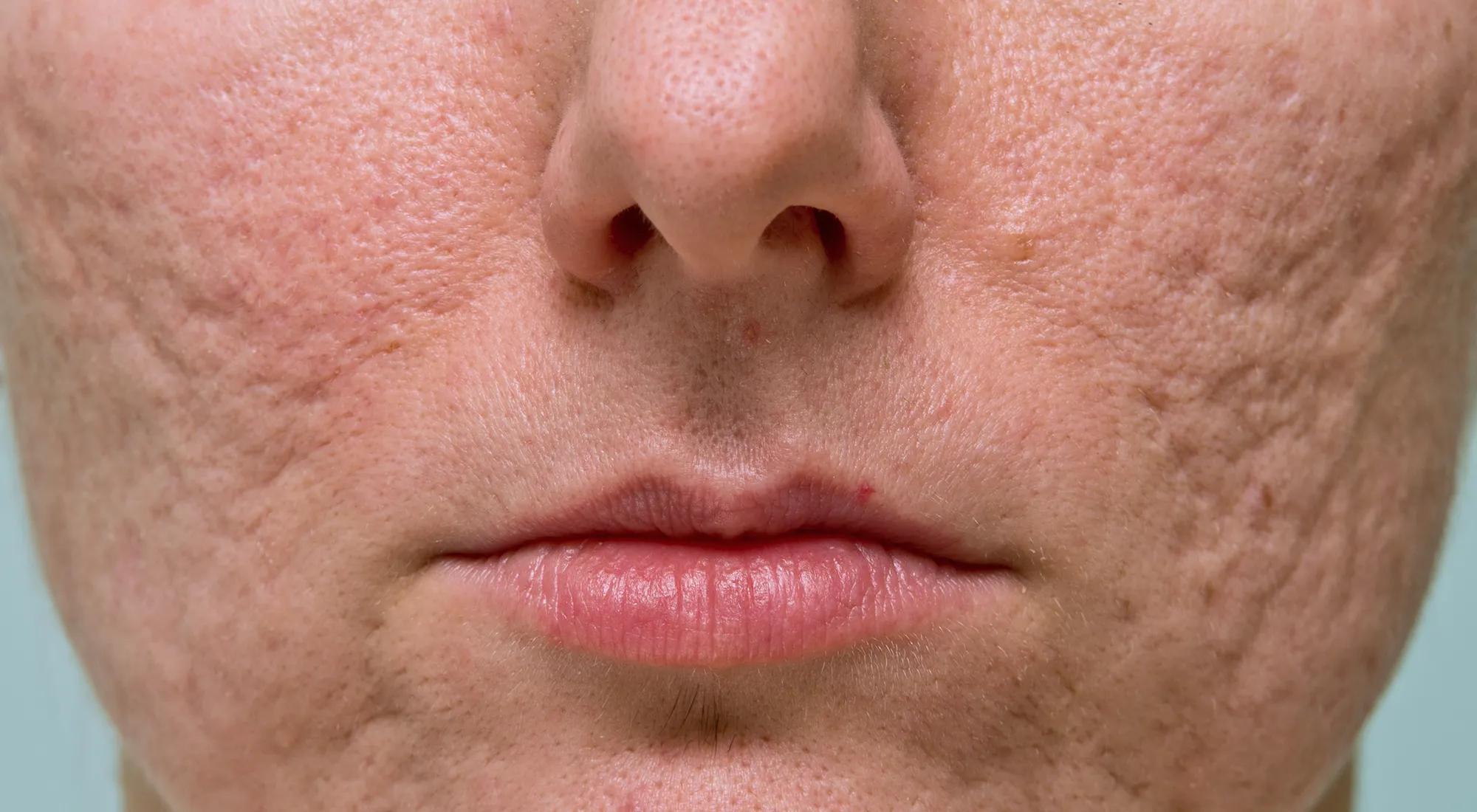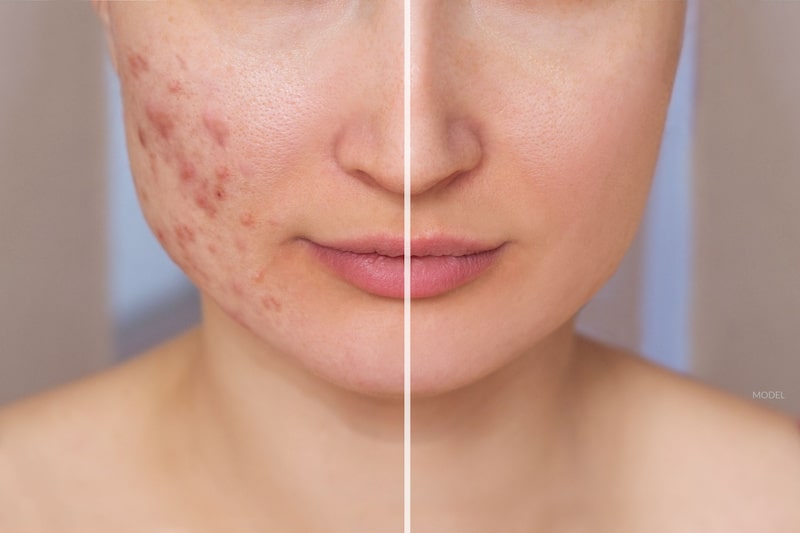Ideal Acne and Acne Scars Treatment: Recover Your Skin's All-natural Elegance
Ideal Acne and Acne Scars Treatment: Recover Your Skin's All-natural Elegance
Blog Article
Recognizing the Various Skin Disease and Effective Therapy Options for Acne Scars
Acne marks represent a complex interplay of skin conditions that considerably effect individuals' self-confidence and general skin health and wellness. Comprehending the unique kinds of acne marks-- hypertrophic and atrophic-- along with their underlying reasons, is crucial for determining reliable therapy approaches. Numerous healing alternatives exist, varying from innovative skin-related procedures to natural remedies. Nonetheless, the efficiency of these therapies usually depends upon personalized evaluations by qualified professionals. As we discover the landscape of acne mark administration, it becomes noticeable that the trip toward more clear skin may involve even more than just topical solutions.
Kinds Of Acne Marks
Acne scars can manifest in different forms, each needing specific therapy approaches. Both primary classifications of acne marks are hypertrophic and atrophic marks. Atrophic scars are identified by a loss of tissue, leading to clinically depressed areas on the skin. These marks are further categorized right into three subtypes: ice choice scars, which are slim and deep; boxcar scars, which are broader and have distinct edges; and rolling scars, which develop a wave-like appearance because of irregular skin structure.
In comparison, hypertrophic marks arise from an overproduction of collagen during the healing process, bring about raised areas on the skin. These scars are commonly strong and can vary in color, often showing up red or darker than the surrounding skin.

Reasons For Acne Scarring
Marking takes place as a result of the body's natural recovery action to inflammation and injury caused by acne sores. When acne kinds, it activates an inflammatory reaction, leading to the launch of different cytokines and growth variables that promote healing. Nonetheless, this procedure can in some cases lead to too much cells formation or poor repair work, resulting in marks.
The key causes of acne scarring include the extent of the acne itself, duration of the lesions, and private skin kinds. Extreme inflammatory acne, such as nodules and cysts, is more probable to result in scarring as a result of deeper tissue damages. Furthermore, inappropriate handling of acne lesions, such as choosing or squeezing, can intensify cells injury and inflammation, boosting the chance of scarring.
Genetic proneness also plays a considerable duty; people with a family background of scarring go to a higher danger. Skin kind and color can influence scar development, as darker skin tones might experience post-inflammatory hyperpigmentation, while lighter skin may develop atrophic marks.

Treatment Options for Scarring
Effective treatment options for acne scarring vary depending on the type and severity of the scars. Generally categorized right into atrophic, hypertrophic, and keloid marks, these problems need like it customized approaches for ideal results.
For atrophic marks, which are characterized by a loss of tissue, treatments such as chemical peels, microdermabrasion, and laser therapy are commonly employed. These approaches advertise skin renewal and boost collagen manufacturing, consequently enhancing skin structure. Subcision, a minimally invasive treatment, can additionally work by breaking up fibrous bands beneath the skin.
Hypertrophic and keloid marks can be much more challenging to treat. Alternatives consist of corticosteroid injections to reduce swelling and flatten the scars. acne and acne scars treatment. In many cases, cryotherapy or laser therapy might be recommended to decrease their look
Surgical alternatives are offered for severe scarring, where excision or skin grafting might be required. It's important for people to speak with a dermatologist to analyze their particular mark type and talk about the most suitable therapy strategy. Combining numerous therapies often generates the best end results, making sure that each client's distinct skin problem is attended to effectively.
Natural Remedy and Natural Solutions
All-natural solutions and home solutions can give an easily accessible approach for people seeking to enhance the look of acne scars. Different ingredients discovered in the home cooking area have demonstrated possible advantages in improving skin texture and promoting recovery.
One popular treatment is aloe vera, recognized for its soothing and anti-inflammatory homes. Using fresh aloe vera gel straight onto the scars can help enhance skin hydration and lower inflammation. Likewise, honey has all-natural anti-bacterial and moisturizing qualities that can assist in scar healing. It can be used as a mask, left on for half an hour prior to washing off.
Another effective choice is lemon juice, which serves as a natural exfoliant and can lighten hyperpigmentation. Nevertheless, it must be utilized meticulously, as it might create photosensitivity. Oatmeal masks are likewise useful; their gentle exfoliation can help eliminate dead skin cells while comforting irritability.
Crucial oils, such as tea tree oil and lavender oil, can better sustain scar healing due to their antimicrobial residential or commercial properties. It is essential to perform a spot examination before applying any type of remedy to ensure there are no damaging responses. These natural solutions can be a corresponding technique in the journey to diminish acne marks.
Stopping Future Scarring
Embracing a positive approach to skin care can significantly decrease the danger of establishing future acne marks. Normal cleaning, peeling, and hydration can aid keep skin health and prevent stopped up pores.
In addition, avoiding the lure to squeeze or select acne sores is important, as this can bring about inflammation and subsequent scarring. Rather, people should concentrate on using topical treatments that promote recovery and lower inflammation. Ingredients such as salicylic acid, benzoyl peroxide, and retinoids are understood for their efficiency in managing acne and reducing marks.

Finally, keeping a healthy diet rich in that site anti-oxidants and remaining hydrated supports skin regrowth. By implementing these precautionary actions, people can considerably reduce their danger of future scarring and advertise total skin health.
Conclusion
In conclusion, a comprehensive understanding of acne marks, incorporating both hypertrophic and atrophic types, is important for reliable therapy methods. Assessment with a dermatologist continues to be imperative to design individualized methods that consider specific skin types and mark intensity, ultimately boosting the effectiveness of mark administration techniques.
Acne marks represent an intricate interplay of skin problems that substantially impact people' self-confidence and total skin health and wellness. The two main categories of acne marks are atrophic and hypertrophic marks. These scars are more categorized right into three subtypes: ice choice scars, which are deep and slim; boxcar scars, which are bigger and have well-defined sides; and rolling scars, which produce a wave-like appearance due to unequal skin appearance.
A comprehensive assessment with a skin doctor click here to find out more can help identify the most appropriate treatment, taking right into account the individual's skin kind, mark seriousness, and overall skin health and wellness.
Consultation with a skin doctor remains critical to develop tailored approaches that think about specific skin kinds and scar seriousness, inevitably boosting the efficacy of scar administration strategies.
Report this page